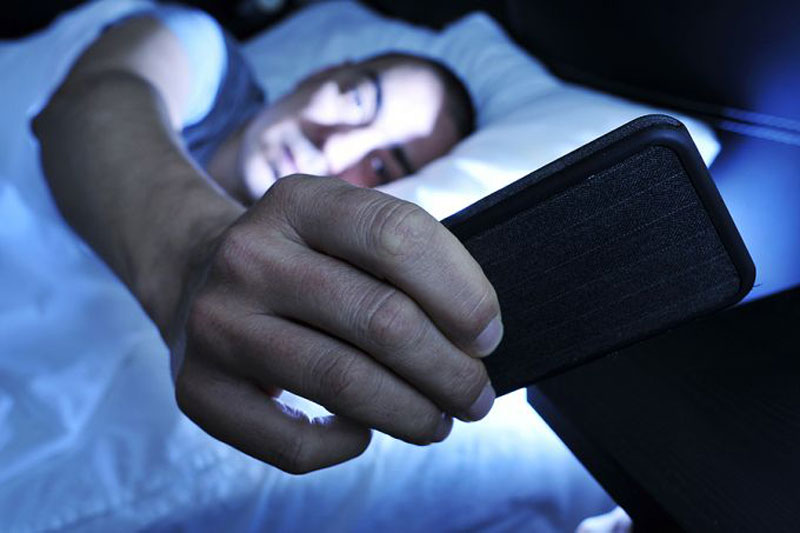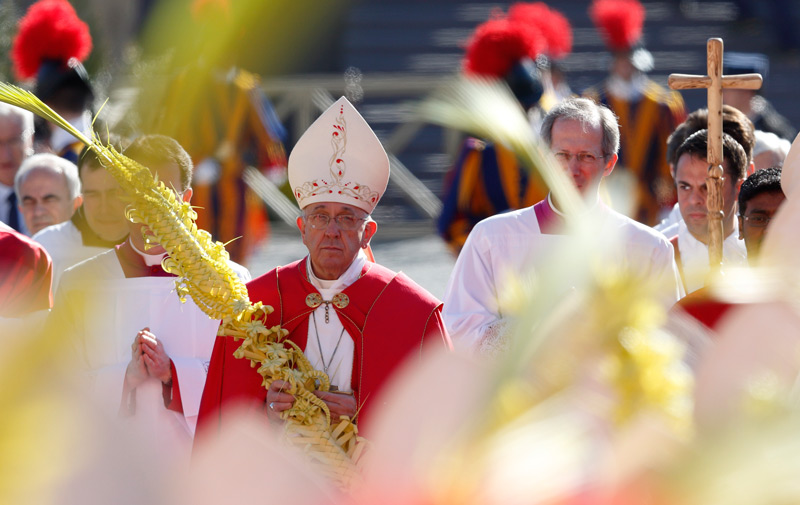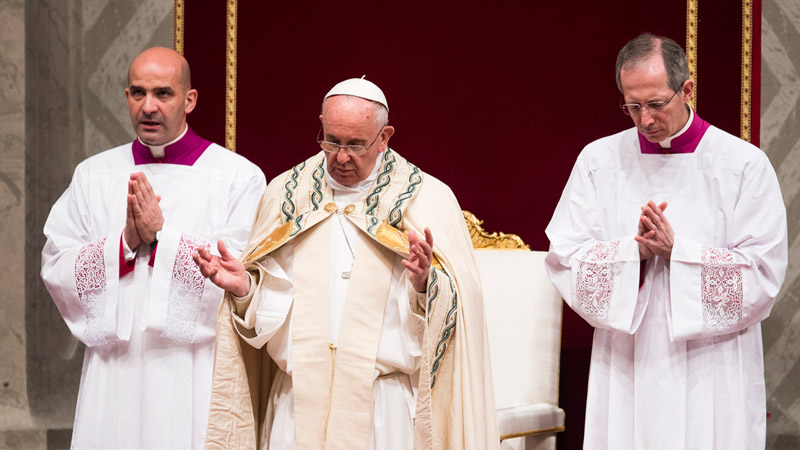
DENVER, COLO.—Clay Olsen speaks to thousands of youth about a subject most people would rather not touch: pornography.
As the founder and CEO of Fight the New Drug, an organization that educates people about pornography addiction, Olsen travels the country giving presentations to young people about how pornography is affecting their brains, their relationships and ultimately the world.
Olsen told CNA that after one particular presentation, a young man asked a question that perfectly illustrates how drastically pornography has changed.
“He asked me very sincerely whether Playboy was pornography or not,” Olsen recalled.
“His definition of pornography had shifted so dramatically … that Playboy doesn’t even make the cut.”
Importantly, this young man is the rule of his generation, not the exception, Olsen said. The effects of constant access to the Internet, made possible by the availability of personal laptops, tablets, and smartphones, has drastically changed how young people consume pornography in a way that many adults dangerously underestimate.
An evolving problem
In the earlier days of the Internet, before the boom of smartphones, a 2004 study from an internet traffic management company saw porn sites grow by 1,800% between 1998 and 2004. At the time, Nielsen/Net ratings estimated that about 34 million people visited adult websites every month.
Today, those numbers seem almost laughable. PornHub, one of the world’s largest adult sites with explicit video streaming, reports that it averages 2.4 million visitors per hour. In 2015 alone, the number of hours streamed from the site was double the amount of time human beings have populated the Earth, according to TIME Magazine.
The amount of content is not the only thing that has changed either. Because of the constant availability of pornography, many users find themselves seeking more and more extreme forms of content, and the Internet has kept up with the demand.
As reported in the Washington Post, a recent content analysis of some of the most popular porn sites found that 88 percent of analyzed scenes contained physical aggression such as spanking, gagging, choking or slapping, and verbal aggression occurred in 49 percent of the scenes. Men perpetrated 70 percent of the aggressive acts, while women were the targets 94 percent of the time.
Several studies have also shown a correlation between the viewing of pornography and the likelihood of committing, or wanting to commit, rape or sexual assault. Other studies show a correlation between men who consume pornography and experience erectile dysfunction, once thought to mostly be a condition of older men.
“So you combine those two things – the prevalence and then also the nature – and that cocktail is really what has driven individuals like myself and those that work with me, and millions of others, to rise up and say we can do better, we have to do better,” Olsen said.
Fortunately, Olsen added, it seems that society may finally be catching up to the truth about the harmful nature of porn. Last month, Belinda Lascombe for TIME Magazine chronicled the stories of young men who are anti-porn advocates after their experiences of porn addiction and consequential impotence. A follow-up op-ed from the Washington Post declared that regardless of pornography’s morality, it’s a public health issue. Also last month, Utah’s Senate unanimously approved a resolution declaring pornography addiction a public health crisis.
Shortcomings in the Church
But what about the Catholic Church? Is enough being done to make the faithful aware of the danger of pornography – to provide resources both protecting those who have not fallen victim and reaching out to those who have?
Pope Francis’ most recent papal exhortation, Amoris Laetitia, mentions pornography directly just two times – once to mention that the bishops have expressed concern about it, and once to mention it within the context of age-appropriate sex education.
But that the word made it into the document at all is a significant step, said Fr. Sean Kilcawley, a priest with the Diocese of Lincoln who has spent a significant amount of his priesthood in pornography addiction and educational ministry. He currently serves as the program director and theological advisor for Integrity Restored, a Catholic apostolate that addresses pornography issues and addiction in families, individuals and clergy.
“Pope Francis has talked about pornography more than any other pope in history, I guarantee it,” Fr. Kilcawley told CNA.
Last June aboard the papal plane, Pope Francis (who does not use the internet or watch TV, and reads just one newspaper) told journalists that parents need to be aware of the “dirty” content, including pornography, that can be found online, and urged them to take preventative steps such as keeping computers in common rooms. He has also mentioned the issue in various homilies and talks, particularly to youth, throughout his pontificate.
The problem in the Church, on a practical and local level, is that pornography addiction treatment programs need to part of a parish’s mainstream ministry and not seen as an obscure ministry needed by the few, Fr. Kilcawley said.
“Anti-pornography ministry is not a peripheral ministry,” he stressed.
“We don’t just need tools to help a few people, we have to take those tools and incorporate them into an evangelization plan that’s trying to evangelize within an entire culture that’s being affected by pornography,” he said.
“Pornography is the biggest obstacle to evangelization that we’re facing as a Church,” Fr. Kilcawley added. “Because the core beliefs of an addict are I’m unlovable, if people really knew me they would reject me, no one can meet my needs not even God.”
Matt Fradd, director of content at Integrity Restored, said the clergy abuse scandal could be part of the reason that clergy are so reticent about addressing pornography.
The demand is enormous, there are many that are struggling…We get emails from 8-year-olds, 9-year-olds, 10-year-olds.
“If sex plus kids equals lawsuits…is it any wonder that nobody wants to talk to kids about pornography?” Fradd told CNA.
Fr. Kilcawley also said some priests may also feel shame addressing the issue due to their own sexual stories.
“We might be afraid that if we talk about it, people will think that we have a problem with it, and so whether we have a problem or not, we can be afraid of that,” Fr. Kilcawley said.
Reluctance to address the issue publicly could also be because of a priest’s own struggle with pornography. In comments to CNA in October 2015, at the time of the Ordinary Synod on the Family in Rome, Archbishop Charles Chaput said that pornography was a major issue among clergy.
“The number of our Catholic clergy who struggle with this problem is very unsettling, and it has nothing to do with celibacy,” the archbishop said, noting that Protestant ministers and Jewish rabbis contend with the same issue. A 2000 survey by Christianity Today found that clergy and laity reported visiting sexually explicit websites at nearly the same rates.
“Pornography’s always been a problem. Ancient Rome was famous for it. Sex is powerful and fascinating, and people have always abused its appeal. … It’s an epidemic, or more accurately, a pandemic. Anyone with an Internet connection anywhere in the world can find all the (pornography) he or she wants,” Archbishop Chaput noted.
But given the prevalence of pornography and its damaging effects, Olsen said, adults can no longer afford to avoid addressing this issue with the children in their lives.
“For many adults, the inclination is to not discuss it. In their opinion, it’s hard, it’s gross, it’s I don’t even want to go there, let’s not focus on it. And although I totally and completely respect their intent and their desires, I have to respectfully come back and say we no longer have the luxury as a society, to sit idly by and watch things continue to progress in a very harmful and societally damaging way.”
Pornography is also important for priests to address with their parishioners in order for them to feel comfortable enough to seek healing, Fr. Kilcawley said.
“It’s just giving people permission to be wounded, which I think is what Pope Francis has been trying to do,” Fr. Kilcawley said. “You have permission to be wounded, and so it’s ok to come and tell your priest that you have this problem in your life. He’s not going to run away from you, he’s not going to scold you, he’s not going to condemn you, he just wants to help you heal.”
“The most shameful sins in our life, we need permission to talk about them,” he said.
Finding solutions
Part of what Fr. Kilcawley does for his anti-pornography ministry is to talk to the parents of his first communicants at a retreat about motherhood and fatherhood within the context of the Church’s teaching on the Theology of the Body. He also spends an hour on internet safety and sex education.
“Pastorally speaking, the best approach is to focus on prevention and focus on relationships within the family, evangelization within the family, and protecting kids from pornography, and the more we talk about it in that way, it’s both bold and less threatening, and then it gives people the freedom to come to the Church to look for healing.”
Once he started talking about the issue of pornography with families, Fr. Kilcawley had so many adults approach him about pornography addiction that he decided to form support groups as well. He now is in charge of a group for men addicted to pornography, as well as a group for women whose husbands are addicted to pornography.
Fr. Kilcawley said he also encourages people who are addicted to abstain from receiving the Eucharist unless they have gone to confession. Even though they may not be in a state of mortal sin due to the compulsive nature of the behavior, not being able to receive the Eucharist unless having gone to confession is an added incentive in the recovery process.
Fradd said talking to kids about pornography in an age-appropriate way is one of the best means to prevent future pornography use and addiction. And the younger parents start, the better, since some researchers estimate the average age of pornography exposure today is 8 years-old.
“I feel like we’re guinea pigs, because parenting in the 8th century and the 13th and the 19th – it was relatively similar compared to parenting in the 21st century,” Fradd said. “The internet really has changed everything.”
Integrity Restored provides parents with free resources about the best ways to talk to their children about pornography. There’s also a children’s book called “Good Pictures Bad Pictures” by Kristen Jenson (available on Amazon), for broaching the subject with the youngest of audiences in an age appropriate way.
Integrity Restored also provides free resources to priests looking for the best ways to broach the subject with their congregations, and hosts symposiums in dioceses in order to educate priests, catechists and the general public on the issue.
Fradd also founded The Porn Effect, which is the youth outreach branch of Integrity Restored that educates youth and provides resources for them about pornography use and addiction. Another important aspect of prevention is internet filters and accountability systems, for which Fradd said he recommends Covenant Eyes.
Olsen said he thinks the best approach to combat a culture of pornography is three-tiered: prevention in children, research on the subject, and recovery therapy programs. Fight the New Drug has spent several years working with neuroscientists and psychologists to develop the Fortified Program, a free and anonymous online recovery program for youth. It currently has over 35,000 users in over 155 countries, and Olsen said he didn’t even put “a penny into marketing or advertising.”
“So the demand is enormous, there are many that are struggling,” he said. “We get emails from 8-year-olds, 9-year-olds, 10-year-olds.”
That the program is free and anonymous is key, Olsen said, because many of these children seeking help will stop once they see either a credit card or parental consent is required, “both of which are a Mount Everest that they are unwilling or unable to climb,” he said.
“We have created a solution that they can jump into that will help them overcome that, so recovery is a big part of how we will heal society.”
Fradd said that in many ways, the resources that the Church needs in order to better address this issue already exist – they just need to be utilized.
“We’re all kind of playing catch up to honest,” he said. “There are beautiful things happening, we just need to know about them.”
By Mary Rezac | Catholic News Agency
Photo credit: nito via www.shutterstock.com.



